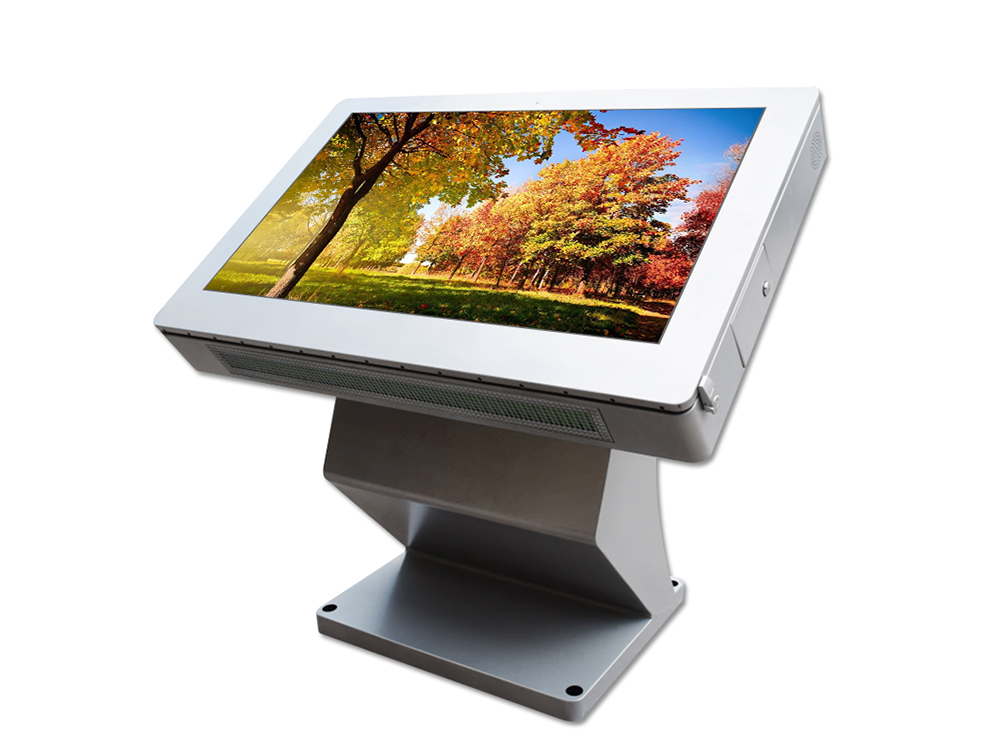Can Digital Signage Support Touchscreen Interactions
In the realm of modern communication and information dissemination, digital signage has emerged as a powerful tool. It transforms static displays into dynamic, engaging visual experiences that captivate audiences across various settings, from retail stores and corporate lobbies to educational institutions and public spaces. As technology continues to evolve, so does the functionality of digital signage, with touchscreen interactions becoming an increasingly popular feature. But can digital signage truly support touchscreen interactions effectively, and what are the implications of this integration?

To delve into this question, it's essential to understand the basics of digital signage and touchscreen technology. Digital signage refers to electronic displays that show information, advertisements, or other messages. These displays can range from simple LCD screens to more sophisticated video walls, and they are often controlled remotely via content management systems. On the other hand, touchscreen technology enables users to interact with digital content by touching the screen directly, similar to how one would interact with a smartphone or tablet.
The integration of touchscreen capabilities into digital signage offers several advantages. Firstly, it enhances user engagement. Traditional digital signage is passive, meaning viewers can only consume the content being displayed. With touchscreen interactions, however, viewers become active participants. They can navigate through different sections, access additional information, and even play interactive games or quizzes. This level of engagement can be particularly beneficial in retail environments, where interactive displays can provide customers with detailed product information, promote cross-selling, and ultimately drive sales.
In educational settings, touchscreen-enabled digital signage can revolutionize the way information is presented and learned. Instead of simply displaying static images or text, interactive displays can offer educational games, quizzes, and simulations that make learning more fun and engaging. Students can interact with the content at their own pace, exploring different topics and deepening their understanding of the material. This can lead to improved learning outcomes and a more positive attitude towards education.
Moreover, touchscreen interactions can provide valuable data and insights. When users interact with a touchscreen display, their actions can be tracked and analyzed. This data can reveal patterns in user behavior, preferences, and engagement levels. For businesses, this information can be invaluable for understanding customer needs, optimizing marketing strategies, and improving the overall customer experience. In public spaces, such as museums or libraries, touchscreen interactions can help gather data on visitor interests and preferences, which can inform future exhibitions or programming.
However, integrating touchscreen technology into digital signage is not without its challenges. One of the primary concerns is the durability and reliability of touchscreen displays. Unlike traditional digital signage, which can operate continuously without much intervention, touchscreen displays are more susceptible to wear and tear. They need to withstand constant touch inputs, which can lead to scratches, smudges, and even damage over time. Therefore, it's crucial to choose high-quality touchscreen displays that are designed for public use and can endure the rigors of continuous interaction.
Another challenge is the complexity of content management. While traditional digital signage content can be easily updated and managed remotely, touchscreen interactions often require more sophisticated software and hardware solutions. Content creators need to design interactive elements that are intuitive and user-friendly, ensuring a seamless experience for users of all ages and technical proficiencies. Additionally, the content management system must be able to handle real-time interactions, process user inputs, and update the display accordingly. This can increase the complexity and cost of implementing touchscreen-enabled digital signage.
Despite these challenges, the benefits of touchscreen interactions in digital signage are clear. They can significantly enhance user engagement, provide valuable data insights, and offer new opportunities for education and marketing. To overcome the challenges associated with touchscreen integration, it's essential to carefully plan and design the digital signage solution. This includes selecting the right hardware and software, designing user-friendly interactive elements, and implementing a robust content management system.
Furthermore, considering the accessibility of touchscreen interactions is crucial. Not all users may be comfortable or able to use a touchscreen display. Some may have physical disabilities that prevent them from interacting with the screen, while others may be unfamiliar with touchscreen technology. Therefore, it's important to ensure that touchscreen-enabled digital signage is accessible to all users, regardless of their abilities or technical proficiency. This can be achieved by providing alternative methods of interaction, such as physical buttons or voice commands, and by designing the interface to be intuitive and easy to navigate.
In conclusion, digital signage can indeed support touchscreen interactions, and this integration offers numerous benefits in terms of user engagement, data insights, and educational and marketing opportunities. However, it also presents challenges related to durability, content management, and accessibility. By carefully planning and designing the digital signage solution, and by selecting the right hardware and software, these challenges can be overcome. Ultimately, touchscreen-enabled digital signage has the potential to transform the way we interact with information in public spaces, making it more engaging, informative, and accessible for everyone.
As technology continues to advance, we can expect to see more innovative uses of touchscreen interactions in digital signage. From augmented reality experiences to personalized content recommendations, the possibilities are endless. The key to success will be in understanding user needs, designing intuitive interfaces, and ensuring that the technology is accessible and reliable. With the right approach, touchscreen-enabled digital signage can become a valuable tool for engaging audiences, gathering data, and enhancing the overall user experience.
Application scenarios of digital signage

Tags:
self service kiosk touch kiosk digital signage interactive display interactive touch whiteboard kiosk video wall wall outdoor kiosk IP68 IP67 screen Shopping MallCurrent article link:
https://www.lcdkiosk.com/news/1338.html







